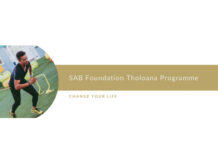Covid-19 has been one of the main reasons for digital transformation across many markets, particularly in the e-commerce space. As a subset of e-commerce, social e-commerce has seen some gains since 2020 with digital media giants enhancing their shopping capabilities in the digital space.
What do we know about social e-comm so far?
eMarketer says: “We define social commerce to include products or services ordered by buying directly on the social platform or through clicking links on the social network that lead to the retailer’s product page with an immediate purchase option. This includes Facebook Marketplace, Instagram Checkout etc.” (Social e-commerce 2021)
In the context of South Africa, 57.7% of internet users have purchased a product online (Hootsuite, We are social report: Jan 2021). As this number increases YOY (year on year), social media companies are upping their shopping games to take their share of this pie to increase revenue. As such, we can expect to see more media budget shifting into social commerce solutions over the next few years.
Platforms that have the scale and contextual relevance to drive product discovery will lead the race. In the U.S, Facebook and Instagram together with Pinterest have offered the best discovery experience and therefore lead in the social e-commerce space. In SA, we see the same from Facebook and Instagram. However, we can expect similar offerings from the likes of Tik Tok and YouTube if their growth in the last year is anything to go by.
What do we have to look forward to in the social e-comm space from some of the leaders in this space?
We have seen the top platforms improve their e-commerce offerings from solutions like product catalogues on Facebook, on platform checkout features on Instagram, Carousel ads on Twitter and even livestream shopping.
Facebook has been the leader in the category with most recently Facebook Shops, Instagram checkout and Facebook Marketplace. These features have been pivotal for digital native brands, who have primarily succeeded in this space. The platform has the scale and technology to offer some of the best ad solutions targeted at a seamless shopping experience from dynamic product ads, collaborative ads, instant experiences, carousel ads etc. With Facebook usage in South Africa so high, much of the product discovery that happens across social platforms happens on Facebook, with Instagram a close second.
However, Facebook has some definite competition as other platforms continue to innovate for increased revenue.
There was news recently around Tik Tok planning to release e-commerce solutions within their ad formats. Tik Tok’s growth globally has been astounding, so its a definite contender to Facebook. While not fully available in South Africa yet, the formats that are being looked at in other markets are collections ads, dynamic product ads, promo and showcase tiles. If you are a small and medium business, there is value in starting on the platform to organically grow your following which can only help when such solutions become available in SA.
There has been so much conversation and hype around the social audio app Clubhouse. According to a Techcrunch article, the platform has launched payments to a small test group of creators which allows top creators to receive payments and donations from followers. Perhaps its a way to retain users on the platform with competitors like Facebook, Twitter and LinkedIn adding similar audio features to their platforms. Nonetheless, they are rapidly evolving in the social commerce space to better the discovery experience for users.
Snapchat has a decent market size in South Africa with about 8 million users, particularly among the younger demographic. There are rumours of Snap integrating a fashion recommendation app called Screenshop onto its platform. The app will be able to recommend clothes to users based on photos that they upload and then facilitate the shopping of these items. Snapchat is known for its amazing AR lens technology so I think it is safe to assume that we will soon see a unique shopping experiencing utilising their lenses. It’s probably a while before we see this in South Africa, but Snapchat is one of the bigger social platforms also pushing to make headway in the social e-commerce space so it’s definitely one to look out for.
Apple’s IOS update and Google’s third party “cookiepocalypse” will be the contributing factors in accelerating social e-commerce activities. On-platform checkouts will become the norm in the next few years as retail brands strive to continue tracking and measuring their consumer journey and actions. It is vital that any retail business that is not in the e-commerce space begin this process.
Lastly, another trend on the increase is livestream shopping. For those of us who are like fine wine (aged) you will remember the TV shopping channel where you could see a product being advertised and purchase by calling the toll-free number (but that’s not all!). In many markets around the world, TV shopping is still very in demand and works really well. However, with the increase in time spent on digital platforms, we are seeing this behaviour make its way into the digital space, giving room for ‘livestreaming shopping’.
The most popular livestreaming shopping platforms are Facebook and Instagram. Facebook allows retailers to sell products through live shopping. This feature integrates with Facebook’s Shop. Instagram allows the same whereby businesses and creators can tag products when they go live. “Before going Live, you can add up to 30 products to a collection to showcase and you can pin one item at a time while Live to feature that product. Only products that have been approved can be added to live videos.” (facebook.com/Instagram)
I am excited to see how these trends roll out over the next year and even more curious to see how our ever-changing consumer behaviour continues to fuel so much of the innovation we are seeing today.





















































































